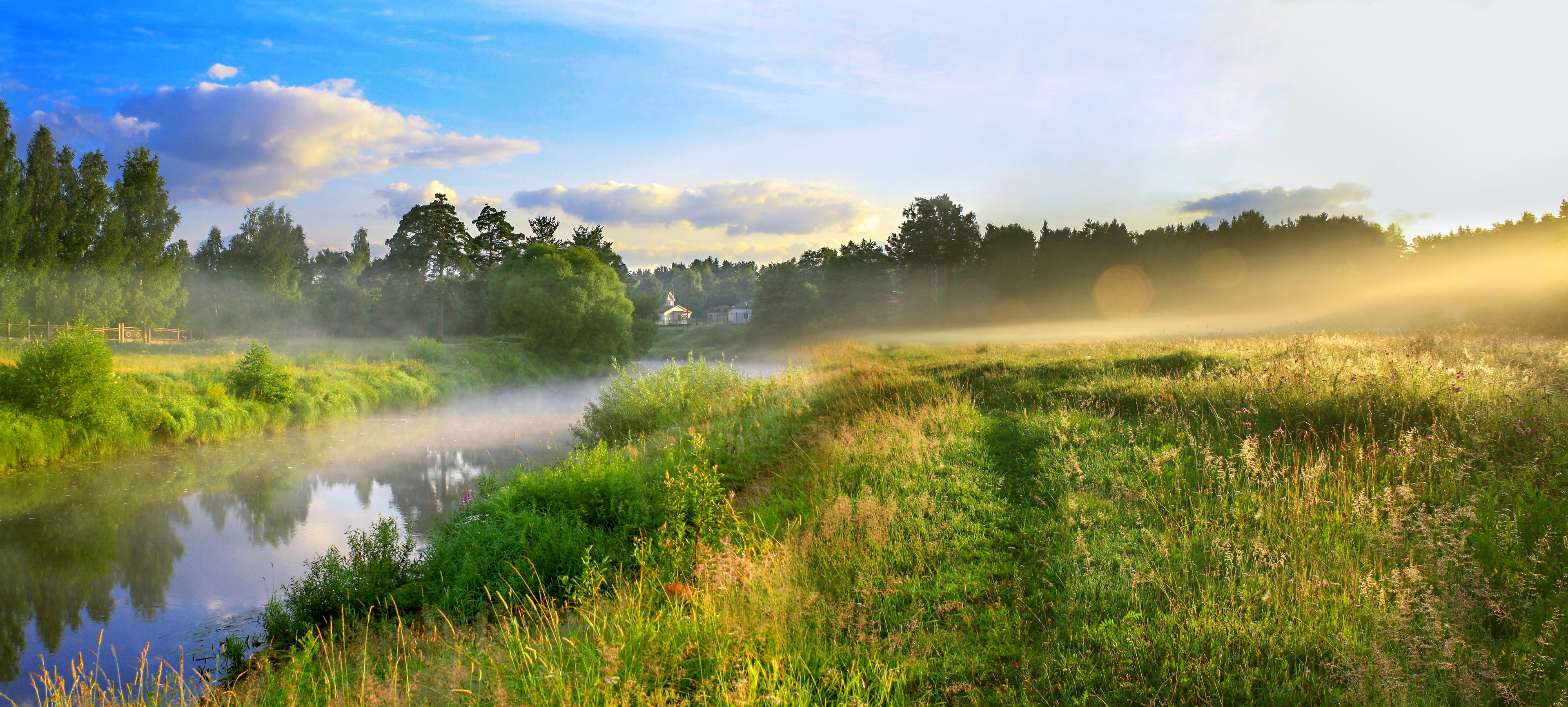ORGANICS ARE NO LONGER A COMPROMISE. I am very excited to finally be able to put those words into print after a decade in the organic green industries. When I entered this field back then, quite accidentally, from my previous life as a scientist/researcher developing human drugs, I realized that there was a disappointingly large gap between science and the organic products that were being used in the ecological fields at that time. This was not due to lack of effort; landscapers, farmers, greenhouse growers, etc. were forced to use products that were below standards because there were no viable alternatives. The field of organics was essentially a choice between the better of bad options to fight major pest, weed, and disease problems and resulted in the loss of clients or crops. It was very common to hear the phrase “organics don’t work,” and rightfully so. More often than not, applicators received inflated promises that resulted in the under-delivery of what was hoped for or expected. But that has now changed. Now, it is without a doubt possible to deliver organic turfs and landscapes that are very close to the aesthetics delivered by synthetic or traditional products but with lower off-target toxicities and environmental impacts and more reasonable costs – costs that can actually be lower in the long-term.

No aspects of organics have come further along in the last couple of years than organic weed and pest control – with major advances in technology and knowledge available to growers, designers and applicators. In fact, when I started ten years ago, I had to tell people there were three holy grails of organics: selective weed control, pre-emergent weed control, and grub control. Now pre-emergent weed control remains as the only holy grail in organics, and even in that area steady progress is being made. Pre-emergents aren’t generally applied in the fall, so will not be talked about in detail for this article.
The most exciting advancement in the field is that, for the first time ever, we can now honestly and proudly say that an organic pesticide is superior to its synthetic equivalents. The Btg technology I describe below is not just superior in its off-target profile, as organic products are usually presumed to be, but most importantly is superior in terms of the efficacy, broad spectrum control and the ease of use. These results are repeatedly demonstrated in head-to-head university studies of Btg against synthetics. It is certainly a new and very exciting day to be involved in organics; not just for me, but for anyone that has been waiting for the day when they can feel better about having a great lawn and landscape while still getting the same results as synthetic applicators provide, without worrying about potential harm to the environment, their children, or pets!
In the following sections, I cover some of the new and game-changing treatments and products that will not only help get you started this fall with some of the common issues encountered in October lawns and landscapes, but also give you a head-start for a more successful spring next year.
Fall Turf Maintenance
As the roots go, so goes the plant, tree or turf. Therefore, the most important goal during the fall season is to stimulate root growth through soil health and biological supplementation. This will establish a base for success, not just for the fall but also for the coming spring and thereafter. With the cooler temperatures and rain falling again, most healthy lawns should have greened up very quickly this fall. As we are often told, organic fall treatments (and all treatments in general) should each be planned individually based on soil tests.
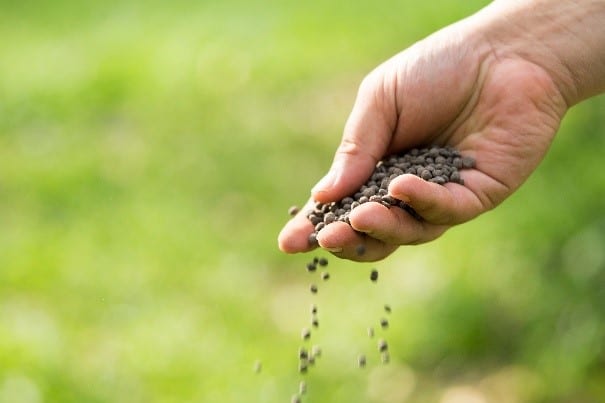 Most people think of fertilizers as the standard fall lawn treatment. This is also one aspect of a good organic program, just in lower amounts and in a more targeted manner. Excess nitrogen can over-stimulate top growth at the expense of healthy root growth and is a major source of water pollution (along with phosphorous). In extreme cases, excess nitrogen and phosphorous can lead to eutrophication. When necessary and as dictated by a soil test, nitrogen should be used sparingly. In addition, phosphorous can only be applied now in many states (including CT, MA, NY etc.) if proven it is needed by a soil test or if seed is being applied. It is also common for nitrogen prohibitions to exist at certain times of the year, so it is always wise to check your local laws and regulations. The third macronutrient, potassium, helps to strengthen grass and is not a pollutant. If a soil test dictates it, organic matter should also be supplemented through amendments such as worm castings, biochar, compost (beware weed seeds), humates, seaweed, etc. Many great organic fertilizers are available that contain not just the macronutrients Nitrogen-Phosphorous-Potassium (N-P-K), but also organic matter and micronutrients that are vital for both balanced chemistry and strong turf, plant, and tree growth.
Most people think of fertilizers as the standard fall lawn treatment. This is also one aspect of a good organic program, just in lower amounts and in a more targeted manner. Excess nitrogen can over-stimulate top growth at the expense of healthy root growth and is a major source of water pollution (along with phosphorous). In extreme cases, excess nitrogen and phosphorous can lead to eutrophication. When necessary and as dictated by a soil test, nitrogen should be used sparingly. In addition, phosphorous can only be applied now in many states (including CT, MA, NY etc.) if proven it is needed by a soil test or if seed is being applied. It is also common for nitrogen prohibitions to exist at certain times of the year, so it is always wise to check your local laws and regulations. The third macronutrient, potassium, helps to strengthen grass and is not a pollutant. If a soil test dictates it, organic matter should also be supplemented through amendments such as worm castings, biochar, compost (beware weed seeds), humates, seaweed, etc. Many great organic fertilizers are available that contain not just the macronutrients Nitrogen-Phosphorous-Potassium (N-P-K), but also organic matter and micronutrients that are vital for both balanced chemistry and strong turf, plant, and tree growth.
All of this is driven by healthy soil biology. Supplementing or stimulating soil biology is always the best and most efficient thing you can do for healthy growth. Soil biology cycles nitrogen and delivers it faster to growing green things, before it can runoff into water as a pollutant or volatilize (gas off). Soil microbes also solubilize phosphorous, so the “P” that is already in the soil, often in amounts well above “optimal” levels in eastern soils, is made much more plant available. Endophytic bacteria and fungi fight pathogenic diseases and kill insect pests, thus reducing the need for pesticides and avoiding growth problems or death in plants, trees, and turfs. Biologicals can be naturally stimulated by balanced soils obtained through good chemistry (i.e. with soil tests to treat what is deficient), supplemented with controlled products containing known microbes with guaranteed counts, or added with less controlled means such as homemade compost, compost teas, worm castings etc. A much more detailed article on soil biology basics can be found in the ELA archives by clicking here. There is also an ELA webinar that covers this matter, free online to ELA members, that can be found by clicking here.
With a smart fall treatment program, healthy, long roots will mean better access to water, nutrients and warmer soils deeper in the ground. A good organic lawn, with a very healthy root base, stays greener longer in the winter and greens up quicker in the spring, has less disease and pest pressure and avoids drought stress and yellowing much longer in the summer. Long-term, organic programs will reduce inputs, time, and costs; your turf or landscape planting will look better and be healthier and require less long-term maintenance.
Weed Control
The best organic weed control starts with healthy soil practices, as covered in the previous section, to promote thicker turf with deeper roots that is better fit to compete with many types of weeds. Also extremely important and very often overlooked are simple cultural practices that greatly reduce weed pressure; the two most important are higher mowing of grass (at 3 inches high or taller) and infrequent, deep irrigation. When break-through does occur despite these changes, or when a professional takes on a new property in which weeds are already prevalent, then more direct weed control intervention may be necessary. The good news is that huge strides have been made in recent years, especially pertaining to new technologies and significantly better weed control products for use in organic lawns.
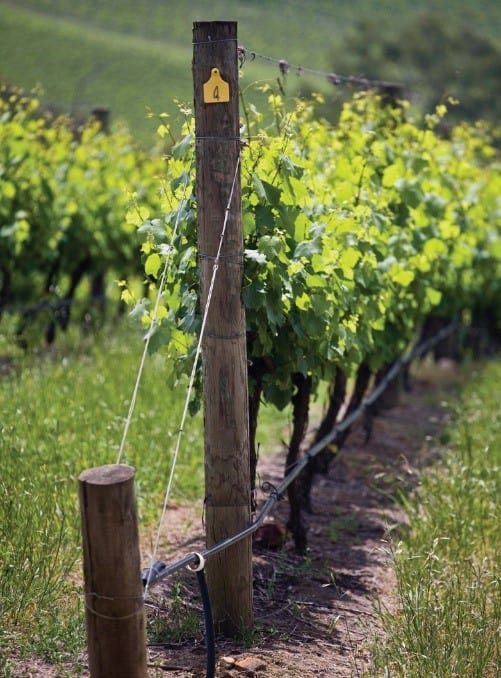 Not very efficacious even just a few years ago, there are now great options for non-selective and selective weed control products to maintain a healthy and aesthetically pleasing lawn. Selective weed-killing options that do not contain glyphosate (the active ingredient in many conventional weed killers, such as RoundUp) are now faster acting than and almost as effective as their synthetic counterparts. These products contain various ingredients such as fatty acids (soaps), d-limonene (organic solvents naturally extracted from citrus) or other organic material and are often OMRI-listed organic. Prices continue to go lower and have become much more competitive recently, even just in the last year. With recent lawsuits ruling against synthetic weed-control products, the demand for less-toxic options to control weed pressure has grown exponentially – not just by the homeowners, but by the applicators, their insurance companies and distributors of products. The technology makes it such that treating without glyphosate is now not just a viable option, but a very effective option that does not necessarily compromise results in many cases.
Not very efficacious even just a few years ago, there are now great options for non-selective and selective weed control products to maintain a healthy and aesthetically pleasing lawn. Selective weed-killing options that do not contain glyphosate (the active ingredient in many conventional weed killers, such as RoundUp) are now faster acting than and almost as effective as their synthetic counterparts. These products contain various ingredients such as fatty acids (soaps), d-limonene (organic solvents naturally extracted from citrus) or other organic material and are often OMRI-listed organic. Prices continue to go lower and have become much more competitive recently, even just in the last year. With recent lawsuits ruling against synthetic weed-control products, the demand for less-toxic options to control weed pressure has grown exponentially – not just by the homeowners, but by the applicators, their insurance companies and distributors of products. The technology makes it such that treating without glyphosate is now not just a viable option, but a very effective option that does not necessarily compromise results in many cases.
The same vast improvements in product efficacy are also now true with selective weed control agents. This class of products used to be one of the holy grails of organics; there were no non-synthetic options available that were comparable to 2,4-D based synthetics in terms of efficacy. That is no longer true. The most exciting advance in this area is with the iron-based products. These products contain a chelated form of iron, which makes them more water soluble and stable and allows for better uptake by weeds. Without chelation, these products would have only a fraction of the efficacy, but they are not certified organic due to the chelating agent, EDTA. However, EDTA is deemed safe enough by the FDA to use in many foods, cosmetics and dietary supplements. It is even approved for use in human medicine as a detoxifying agent. Many products containing EDTA can be found by simply looking in your refrigerator or medicine cabinet. In any case, the improvements in efficacy with the chelated iron products, as well as recent price reductions, have made these products a practical part of standard spot-treatments for lawn care programs when transitioning to practices that will otherwise reduce weeds long-term. As a testament and validation of the efficacy and the wider acceptance of their use, one was recently cited by Dr. Frank Rossi in a Cornell University newsletter that can be found by clicking here and scrolling down to the last paragraph.
For a more in-depth summary of organic options for weed control, you can also read our blog post here.
Grub Control
As I mentioned in the introduction, organic grub control was the third and final holy grail of organics up until a few years ago. Not only is it no longer a weakness of a comprehensive organic program, but grub control is now the most exciting area of advancement in the field with the arrival of products containing the novel and unique microbe Bacillus thuringiensis galleria (Btg). While limited efficacy may or may not have been seen previously with organic products such as Milky Spore or beneficial nematodes (the research literature is weak at best), these previously used organic approaches have drawbacks under even the best-case scenarios. Namely, (a) a lack of broad-spectrum control for the species of white grubs (such as European Chafer grubs and Asiatic Beetle grubs) that in many areas of the northeastern United States are now more prevalent than Japanese Beetle grubs and (b) the need to get the products down at the early, first instar stage of grub growth in August – long before any active grubs or visible damage can be seen. In other words, only preventatively.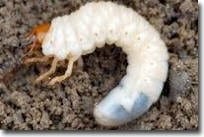
That, however, is no longer a problem with Btg-containing products. In fact, I can now say, for the first time in the decade that I have been in this field, that an organic pesticide is superior to synthetics in terms of efficacy!
Btg has been tested in head-to-head university studies with synthetic products containing active ingredients such as imidacloprid, thiamethoxam and clothianidin (neonicotinoids), trichlorfon (an organophospate) and chlorantraniliprole; products that go under trade names such as Merit, Arena, Meridian, Dylox, Acelepryn, etc. In all cases, the Btg has performed at least the same in terms of total grub control, and sometimes better than, these existing synthetic control agents. These studies come from well-respected research universities such as UMASS, Cornell, NC State, Ohio State University, The University of Nebraska etc. Best of all and most relevant to those striving for more environmentally friendly solutions, Btg has no effect or toxicity when tested against beneficial insects such as bees, beneficial nematodes, and parasitic wasps, many of which also prey on the grubs. In fact, the activity of the Btg is so specific for the scarab beetle adults and larvae (white grubs) that it does not even affect beneficial lady beetle species (lady bugs) that also prey on aphids and other insect pests. This means that not only does the Btg attack the grubs successfully and as well as synthetic chemicals, but it also keeps intact the natural predatory systems that also attack the grubs. A double whammy against these damaging pests with a “silver bullet” approach that targets just the pest and not the rest!
Another huge advantage of the Btg products over most existing products, synthetic or organic, is the huge flexibility of Btg in the application timing. Btg can be applied as both a preventative and a curative; most of the above-named chemistries need to be applied preventatively and do not work curatively. Trichlorfon is curative, but it is not a good preventative due to the short half-life. Since only approximately 20% of lawns will actually have a grub infestation above the threshold that requires treatment, now having a curative or preventative organic product available allows for scouting and hence the elimination of unnecessary pesticide treatments on the other 80% of the turfs. Not only does this save applicators a lot of time and money, it also minimizes the unnecessary use of preventative synthetic treatments that may have off-target toxicities, especially to beneficial insects and the very predators that naturally fight grubs when they do come along.
When do you treat for grubs using the Btg products? As a preventive, treatments can start in late July through mid-August. That is when the new beetle eggs hatch and the first instar stage of the grubs begin to eat and damage turf roots. However, as mentioned above, the Btg products can be used as a curative as well. Now, in the month of October, is the time when grub infestations will become apparent with dead or yellow spots or as turf that can easily be pulled out of the ground by hand or that simply flies away during mowing.
Btg products will stop further damage but will not reverse the already existing damage from earlier in the season. Re-seeding may be necessary if grubs were present, but it is still optimal to first eliminate grubs ahead of time before the new grass seedlings simply turn into fresh grub food.
In addition to this primary grub damage, secondary damage from grubs in the fall, from animals such as moles, skunks, racoons, birds, etc. (which can be much more significant than the actual grub damage), is in progress this time of the year and will continue through the late spring. These insectivores digging up or tunneling through the lawn while eating the grubs can cause damage quite literally overnight, damage that is often more extensive than the primary grub damage. Although animals can be an indicator of a grub infestation, the presence of these animals digging up a yard is not a definite sign that treatment is necessary. Many of these species also eat worms or other insect larvae, which are often present in healthy organic lawns or areas that have had minimal pesticide use. Therefore, scouting for grubs is the best way to know if a treatment is necessary. You can pull up the turf by cutting 1-foot slices with a knife or hand shovel and pulling up or rolling back the turf. See a great tutorial and instructions from Cornell University here. Five or more grubs in a one square foot area means that treatments should be considered, depending on the circumstances. Anything less than five grubs per square foot will generally not necessitate a treatment as healthy turf roots can sustain and survive this normal level of grub presence.
Overview and the Future
It is truly a wonderful time to be a turf care professional or hobbyist looking to garden or treat lawns organically. Although it used to be true that organic treatments were too expensive or did not work, this is no longer the case. The products now available in the organic or natural markets are way ahead of where they were even just a few years ago. It is finally possible to have a lawn that looks almost as good as a synthetic lawn, and in some cases better, throughout the year. You can maintain organic lawns that are significantly thicker, greener and healthier; even more so during stressful times for the turf due to factors such as drought, colder weather or pest and disease pressure. With a long-term approach that includes soil testing, better cultural practices (as in higher mowing and smarter irrigation) and biological supplementations, long-term costs can actually be lowered and maintenance greatly reduced with less inputs needed, organic or otherwise. Fertilizer use can be significantly reduced and specifically targeted, and there will be much less weed, pest, and disease pressure with healthier, plusher lawns and deeper root structure.
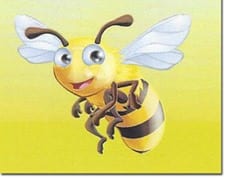 A smart organic approach does not mean just substituting an organic product for a synthetic. It is a whole-system approach that minimizes inputs, even organic inputs, through building healthy soil in a strategic and targeted manner. The products mentioned above, even organics, should not be used unless necessary. Organic does not always mean safe — some organic products can be just as harmful to beneficials or the environment as synthetics, so a judicious approach is always the best practice with any pesticide or fertilizer use, organic or not. This approach is called Integrated Pest Management, or IPM, and has been highly successful in the green industries. The proper diagnosis of a pest allows for maximally targeted treatments with minimum side effects to your lawn or the environment, and also saves money and time in many cases. Fortunately, diagnosis can now be done quickly and for free, without driving to an extension center, through a free app on your smart phone that is linked right to a plant pathologist. And, when treatments are needed for weeds or pests, an exciting new array of highly effective and more environmentally friendly organic pesticides are now available that have comparable results to their synthetic counterparts!
A smart organic approach does not mean just substituting an organic product for a synthetic. It is a whole-system approach that minimizes inputs, even organic inputs, through building healthy soil in a strategic and targeted manner. The products mentioned above, even organics, should not be used unless necessary. Organic does not always mean safe — some organic products can be just as harmful to beneficials or the environment as synthetics, so a judicious approach is always the best practice with any pesticide or fertilizer use, organic or not. This approach is called Integrated Pest Management, or IPM, and has been highly successful in the green industries. The proper diagnosis of a pest allows for maximally targeted treatments with minimum side effects to your lawn or the environment, and also saves money and time in many cases. Fortunately, diagnosis can now be done quickly and for free, without driving to an extension center, through a free app on your smart phone that is linked right to a plant pathologist. And, when treatments are needed for weeds or pests, an exciting new array of highly effective and more environmentally friendly organic pesticides are now available that have comparable results to their synthetic counterparts!


